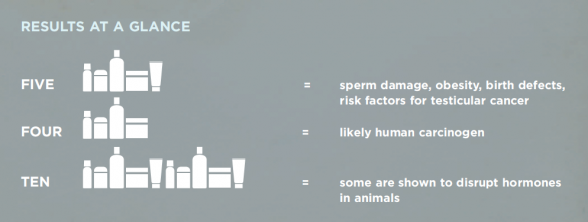Men’s Health and Movember

By Muaz Nasir
For those of you not aware, this is Movember, the annual campaign where men across the country grow moustaches to raise awareness and funds to fight prostate cancer. While the Muslims for Movember movement is still in its infancy, the campaign has raised the profile of prostate cancer and has brought to light some of the causes and new treatment options into the public domain.
To coincide with the Movember awareness campaign, Environmental Defense released a report this week analyzing the toxicity of ingredients in men’s bodycare products.
For this study they asked five men from four provinces what products they used most then tested 17 of them for their contents. Their findings were startling with four of the products containing probable human carcinogens, five containing chemicals known to harm male reproductive health and 10 which had artificial musk, some of which are known to disrupt hormones in animals. Many of the chemicals found in these products were linked to cancer, birth defects, sperm damage, obesity, asthma and other chronic health problems.
What is worrisome are the effects of these chemicals once they are released into the environment and waterways, where they can linger and bioaccumulate, adversely affecting natural ecosystems. One only has to look at the effects of DDT to see the connection.
So what do these results mean? On their own these chemicals occur in such trace amounts there would be little cause for concern. However, daily exposure in combination with chemicals from other products have cumulative effects on the body that are not fully understood. Taking into consideration the interactions between chemicals, the environment and individual genetics can produce varying results. It is impossible to know the consequences of all possible combinations, creating what is referred to as the ‘cocktail effect’.
There are several steps you can take to protect yourself and loved ones from unnecessary exposure to harmful chemicals in personal care products:
1) Choose safer alternatives: Environmental Defense has compiled a list chemicals commonly found in consumer body-care products known as the “Toxic Ten” that should be avoided (see below).
2) Use in moderation: If you must continue to use products with these chemicals, consider using it less until you can find a safer alternative.
3) Speak out: Contact the manufacturer to let them know you would like full disclosure of the ingredients contained within their products, including impurities and fragrance. Also, let the federal government know this issue is important to you and that tougher health-protective legislation needs to be enacted to ensure consumer products are safe.
THE “TOXIC TEN”: HARMFUL CHEMICALS THAT APPEAR ON LABELS
Parabens: estrogen-mimicking chemicals found in breast cancer tissue
Phthalates: chemicals that disrupt male hormones, affect fertility, and are also linked to testicular cancer
Triclosan: an anti-bacterial chemical that breaks down into chloroform and dioxins, which are Carcinogens
Petrolatum or Mineral Oil: often contaminated with human carcinogens polyaromatic hydrocarbons (PAHs)
Fragrance or Parfum: unlisted ingredients, many of which are hormone-disrupters and sensitizers. A sensitizer is a chemical that causes normal tissue to develop an allergic reaction after repeated Exposure
Sodium Laureth Sulfate and Sodium Lauryl Sulfate: skin irritants
Cyclomethicone, Cyclotetrasiloxane, Cyclopentasiloxane, or
Cyclohexasiloxane: hormone-disrupting chemicals present in hair products
Formaldehyde-Releasing Agents•: formaldehyde is linked to leukemia and other cancers
Coal Tar-Derived Colours: para phenylenediamine (PPD) is a sensitizer, and suspected carcinogen
Butylated Hydroxyanisole (BHA) and Butylated Hydroxytoluene (BHT): hormone-disrupting chemicals used as preservatives
[Source: www.Khaleafa.com]



